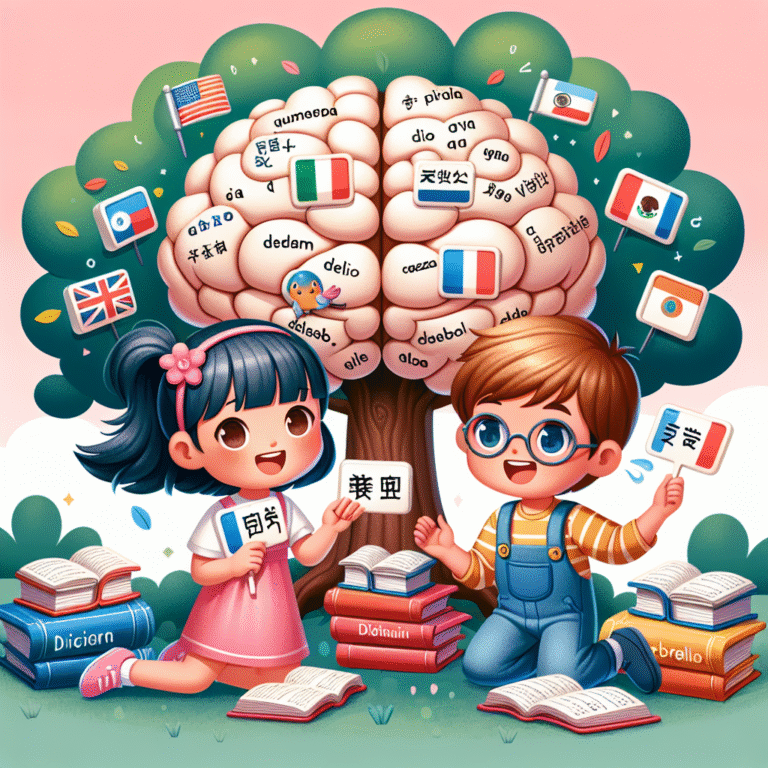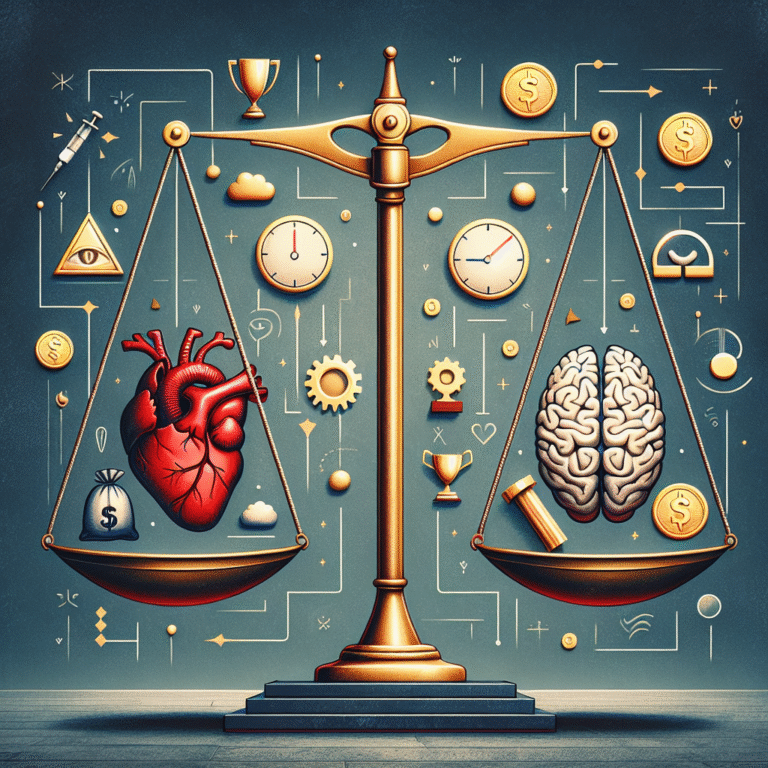
Introduction
Have you ever made a decision that you later questioned—the impulse buy that seemed so right at the moment or the choice to skip a workout when you knew you shouldn’t? You’re not alone. Our brains are wired in complex ways that often lead us astray. The phenomenon of biases in the brain is more than just a curiosity; it impacts our daily lives, our financial decisions, and even our relationships. In "Biases in the Brain: Discovering the Psychology Behind Our Irrational Decisions," we’ll delve deep into the layers of how our minds operate, revealing the psychological underpinnings of our seemingly irrational behaviors.
Understanding Cognitive Biases
Cognitive biases are systematic patterns of deviation from norm or rationality in judgment. They occur when we rely on heuristics—mental shortcuts that simplify decision-making. While these shortcuts can be helpful, they often lead to errors. Some common cognitive biases include:
- Confirmation Bias: The tendency to search for, interpret, and remember information in a way that confirms one’s preexisting beliefs.
- Anchoring Bias: Relying heavily on the first piece of information encountered (the "anchor") when making decisions.
- Hindsight Bias: The inclination to see events as having been predictable after they have already occurred.
Case Study: The Challenger Disaster
A stark example of cognitive bias at work is the Challenger Space Shuttle disaster in 1986. Engineers at NASA were aware of potential issues with the O-rings in cold weather but experienced confirmation bias—focusing on the successful launches and downplaying the risks. This tragic event highlights the dangers of cognitive biases in high-stakes environments.
Table 1: Overview of Common Cognitive Biases
| Bias Name | Description | Real-World Impact |
|---|---|---|
| Confirmation Bias | Focusing on information that supports existing beliefs | Misleading conclusions in politics and science |
| Anchoring Bias | Prioritizing the first piece of information | Overpaying for products based on initial prices |
| Hindsight Bias | Believing past events were predictable | Misjudging risk in future decisions |
The Neuroscience Behind Biases in the Brain
Delving into the biological aspect of biases requires an understanding of how the brain processes information. Various areas of the brain contribute to decision-making and judgment, such as the prefrontal cortex, which is responsible for reasoning, and the amygdala, which processes emotions.
Studies using neuroimaging have shown that when we encounter information that contradicts our beliefs, the amygdala is activated, causing emotional discomfort. This emotional response can lead to further entrenchment in our original beliefs, a concept known as "cognitive dissonance."
Case Study: The Role of the Amygdala in Political Decision-Making
Research conducted during the 2016 U.S. presidential election showed that people with stronger emotional responses in their amygdala when encountering opposing political views were less likely to change their opinions. This case underscores the interplay between emotions and biases in the brain.
The Impact of Social Influence on Decision-Making
Our decisions are not made in a vacuum; social context significantly shapes them. Social biases arise from our need to conform and gain acceptance among peers.
- Groupthink: The practice of thinking or making decisions as a group, which can lead to poor judgments.
- Bandwagon Effect: The tendency to adopt beliefs because others have adopted them.
Case Study: The Bay of Pigs Invasion
The Bay of Pigs invasion in 1961 is a powerful example of groupthink. President Kennedy and his advisors failed to critically assess their plan due to a desire for consensus. This incident illustrates how social biases can lead to catastrophic decisions.
Chart 1: Social Influences on Decision-Making
| Influence Type | Description | Example |
|---|---|---|
| Groupthink | Desire for harmony affects decision quality | Bay of Pigs invasion outcome |
| Bandwagon Effect | Following popular trends without critical thinking | Adoption of social media platforms |
Navigating Through Biases in the Brain
Understanding the biases in the brain can empower us to make better decisions. Here are some strategies to mitigate these biases:
- Awareness: Simply acknowledging that cognitive biases exist can be a powerful first step.
- Seek Diverse Perspectives: Actively look for opposing viewpoints to challenge your beliefs.
- Reflect Post-Decisions: After making a decision, take the time to assess your thought process and identify any biases that may have influenced you.
Case Study: The Power of Reflection in Financial Decisions
Research on investment behavior shows that reflecting on past decisions significantly reduces the impact of anchoring bias. Investors who analyze their previous choices for confirmation or mistakes are likely to make more rational decisions in the future.
The Role of Emotion in Decision-Making
Our emotions play a significant role in shaping our decisions. While emotions can sometimes lead us astray, they also provide valuable information about our preferences and values.
- Emotional Intelligence: The ability to recognize and understand emotions in ourselves and others is crucial for making sound decisions.
- Mood and Judgment: Our emotional state can influence how we perceive risks and rewards.
Case Study: Emotions in Consumer Behavior
Research has shown that consumers often make purchasing decisions based on emotion rather than logic. A landmark study by neuroscientist Read Montague demonstrated how emotional cues could override logical thinking when it comes to food choices in a grocery store.
The Road Ahead: Encouraging Rational Decision-Making
By understanding "Biases in the Brain: Discovering the Psychology Behind Our Irrational Decisions," we can foster environments that encourage rational decision-making.
- Education: Integrating decision-making curricula into education can help individuals become more aware of their biases.
- Cognitive Behavioral Therapy (CBT): This therapeutic approach helps individuals identify and challenge biased thought patterns.
- Organizational Policies: Companies can establish policies to counteract biases in hiring or investment decisions.
Case Study: Implementing Change in Corporate Culture
Companies like Google have adopted practices aiming to reduce biases in hiring and decision-making processes. By instilling awareness and promoting diverse perspectives, they enhance their organizational effectiveness.
Conclusion
Biases in the brain are an intrinsic part of human decision-making; understanding them allows us to make more informed choices in our lives. By embracing awareness and actively seeking diverse opinions, we can counteract irrational decisions and make strides toward more objective thinking. While biases may never completely disappear, we can certainly take action to understand and mitigate their effects.
FAQs
1. What are cognitive biases?
Cognitive biases are systematic deviations from rational judgment, often resulting from our brain’s reliance on heuristics, or mental shortcuts.
2. How can I recognize my own biases?
Awareness is the first step. Reflect on your decision-making processes, and seek feedback from others to identify patterns in your judgments.
3. Are cognitive biases always bad?
Not necessarily. While they can lead to poor decisions, cognitive biases also help us simplify complex decisions in our daily lives.
4. Can biases be completely eliminated?
While biases cannot be entirely eliminated, understanding and mitigating their effects can lead to better decision-making.
5. How can organizations reduce biases?
Organizations can foster diversity, implement structured decision-making processes, and educate employees about cognitive biases to reduce their impact.
By exploring the intricacies behind biases in the brain, you’re not just learning about psychology; you’re gaining tools to improve your decision-making and enrich your life. Understanding these psychological mechanisms allows for empowered, rational, and informed choices that foster better interpersonal relationships and a more fulfilling life.















